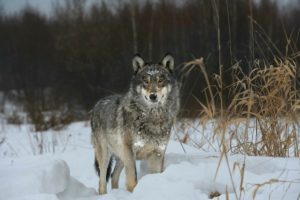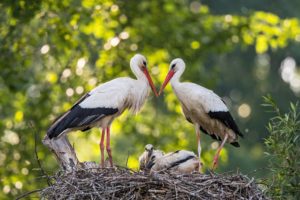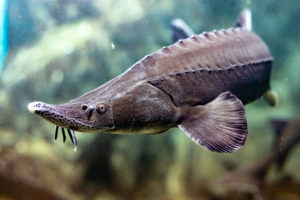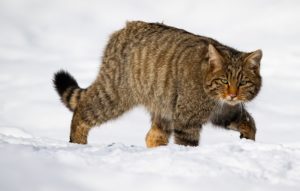Flora and Fauna of Ukraine
As war broke out in Ukraine after the invasion by Russian forces, I wanted to do my small part in educating the world about the flora, fauna, and habitats of this beautiful country. While few species are endemic to this region, the country of Ukraine does host a wide variety of species in its steppe grasslands and mountainous regions.
According to Wikipedia, the fauna of just the area inside the Carpathian Biosphere Reserve is represented by 64 mammal species, 173 birds, 9 reptiles, 13 amphibians, 23 fish, and more than 10,000 invertebrate species. 72 of these species are listed in the Ukrainian Red Data Book and in IUCN and the European Red Lists.
Below you’ll find some spotlights on plants and animals to be found in Ukraine and I will continue to add to this list as I research more species. At the bottom of this page, I’ve listed some organizations you can donate to that are helping with the wildlife, pets, and livestock injured or abandoned in this war.
The Eurasian Wolf of Ukraine
About 2,000 wolves live in Ukraine, many famously moving into the Chernobyl area (like the one pictured here) after the nuclear disaster of 1986. Chernobyl became an unexpected haven for wildlife of all sorts from Eurasian lynx to European Bison. The Chornobyl Radiation and Ecological Biosphere Reserve was established in 2016 to preserve its unique flora and fauna, including wolves.
The Eurasian Wolf is the largest subspecies of Grey Wolf and was once widespread throughout Eurasia until the Middle Ages.
Grey Wolves once roamed throughout Eurasia and new research has confirmed that the domestic dog is a divergent subspecies of the gray wolf and was derived from a now-extinct population of Late Pleistocene wolves.
Storks of Ukraine
The White Stork is widely considered to be the national bird of Ukraine, it is seen as a symbol of family, loyalty, and patriotism. If a stork nests on the roof of your house it is said to bring good luck. According to Ukrainian and other European folk beliefs, the stork possesses magical powers to protect and help humans. A family with a stork’s nest on its farm will live in peace, prosperity, and good health. A village with many storks can count on a bountiful harvest. In folk tales and legends, the stork plays the role of a helper of humans.
The White Stork species is found throughout Ukraine, while the Black Stork is found in the Carpathian Mountains and in Polisia. Swans and nightingales are also important national symbols for the people of Ukraine.
Wildflowers of Ukraine
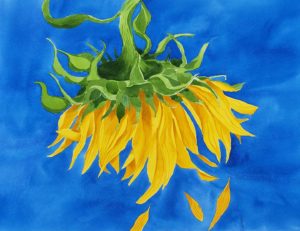
Sunflower painting by Christine Elder
While sunflowers are not native to Ukraine (they’re from North America) they are grown widely in this country of grassy steppe lands and are considered the national flower of Ukraine. The sunflower is becoming a global symbol of solidarity with the people of Ukraine as they fiercely battle for their freedom.
Sturgeon of Ukraine
Six species of sturgeon can be found in Ukraine, occurring most often in the Danube River basin, all of which are listed as threatened or critically endangered with extinction. Some are migratory to the sea and some are strictly freshwater species, such as the Sterlet.
The World Wildlife Fund has been working to restore sturgeon populations and in 2021 they released 10,000 Sterlet sturgeons into the Danube with the financial help of over 1,000 Ukrainians donating more than 8,000 Euros to the effort. Read more here.
The Spotted Fire Salamander of Ukraine
Fire Salamanders occur in central and southern Europe and are found in woodland habitats near water sources. They are the largest species in their family and have showy black and yellow coloration that warns would-be predators of their toxicity. They are amazingly long-lived, with one captive specimen living over 50 years in a German natural history museum. Like other amphibians, they are threatened with habitat loss, collection for the pet trade, and sensitivity to pollutants in the air and water.
Within Ukraine only one of the several subspecies; the Spotted Fire Salamander, is present.
Other amphibians of note that reside in the forests and wetlands of Ukraine include the Yellow-belled Toad, Green Toad, Pallas’ Spadefoot Toad, Agile Frog, March Frog, and a variety of newts known as Tritons including the Alpine Triton, Danube Triton, Karelin Triton, and Carpathian Triton.
The Saker Falcon of Ukraine
The endangered Saker Falcon is a wide-ranging species that doesn’t breed in Ukraine but does spend a portion of each year in a wide swath of the country’s steppe grassland habitats.
The Przewalski Horse of Ukraine
Przewalski’s Horse is a rare and endangered relative of the domestic horse originally native to the steppes of Central Asia. Only a few thousand survive in the wild, with a surprising stronghold in the Chernobyl area where 31 horses were reintroduced after the nuclear power plant disaster of 1986.
Their population in the area now designated as the Chornobyl Radiation and Ecological Biosphere Reserve stood at around 150 horses as of a census conducted in 2018.
Most of Eurasia’s population of about 2,000 is much farther east, in Mongolia where this animal is held in high esteem, though its wild nature has never allowed it to be tamed.
You can read all about the Przewalski’s horses found in the Chernobyl area of Ukraine at The Conversation and more about the species’ biology and conservation at The Smithsonian.
The European Wild Cat
The European Wildcat (Felis silvestris) inhabits forests in Europe, Anatolia, and the Caucasus, including Ukraine. The subspecies known as the Forest Wildcat; Felis silvestris silvestris, inhabits forests of Western, Central, Eastern, and Southern Europe.
They are often mistaken for domestic cats to which they are closely related and often hybridize with them. Disease transmission from domestic cats and competition with feral cats for food are other potential threats. Human-caused mortality can be very high. Many wildcats get killed on roads or as by-catch in control measures for other carnivores. Rodenticides may also threaten wildcat populations.
This Wildcat is primarily associated with forest habitat and is most abundant in broad-leaved or mixed forests. However, it also inhabits grassland and steppe habitats and can be found in the Mediterranean scrubland, riparian forest, marsh boundaries, and along sea coasts or in very wet swampy areas.
Lend your support to Ukraine
Ukraine is in a state of emergency due to the actions of Russia. With the bombings, animal rescue groups have become isolated and animals are injured. Vets have closed due to safety risks. People are fleeing the country and searching for ways to take their beloved pets. Heroes in neighboring countries are on standby to take in 2 and 4-legged refugees Please help by supporting these verified charitable organizations:
- Shelter Ugolyok – a pet and livestock rescue group.a veterinary couple in Odessa that cares for native and exotic wildlife. Check out their Instagram page for their latest updates from the war zone.
- Vet Crew Foundation and the Vet Crew Veterinary Hospital – a veterinary couple in Odessa that cares for native and exotic wildlife. Check out their Instagram page for their latest updates from the war zone.
-
TO HELP RESCUE HORSES FROM THE WAR ZONE: www.justgiving.com/crowdfunding/helphorsesinukraine?utm_term=2gAVA9qEE
-
TO SUPPORT UKRAINE ANIMAL RESCUE LOGISTICS: IFAW (International Fund for Animal Welfare) www.ifaw.org/eu/news/emergency-aid-ukraine
-
TO SUPPORT 14 DIFFERENT UKRAINIAN RESCUE SHELTERS: WarPaws & Darya www.indiegogo.com/projects/raising-money-for-animal-shelters-in-ukraine#/
-
TO SUPPORT ROMANIAN RESCUES TAKING IN REFUGEE PETS: Underdog International https://donorbox.org/support-ukraine-1
-
TO ADOPT A DOG FROM ROMANIA (FREEING UP SPACE FOR UKRANIAN DOGS): Join FB page www.facebook.com/groups/480671290390692


